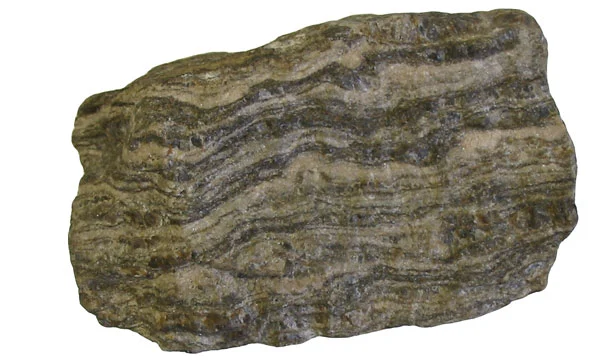Properties of Gneiss
Gneiss is a type of metamorphic rock that forms from the transformation of pre-existing rocks, such as granite or shale, under high temperature and pressure conditions. It is characterized by its banded appearance, with alternating layers of different minerals, giving it a distinct foliated texture.

The following table provides a list of gneiss properties in both SI and US customary/Imperial units at normal temperature and pressure (NTP).
Click on the button to switch between Metric and Imperial units.
| Physical Properties | Metric |
|---|---|
| Density | 2500 - 2900 kg/m3 |
| Porosity | 0.5 - 1.5% |
| Mechanical Properties | Metric |
| Young’s Modulus (E) | 13 - 35 GPa |
| Tensile Strength | 5 - 20 MPa |
| Compressive Strength | 80 - 320 MPa |
| Modulus of Rupture | 8.3 - 21.4 MPa |
| Hardness (Mohs) | 5.2 - 6.5 |
| Thermal Properties | Metric |
| Thermal Conductivity | 2.1 - 3.4 W/m·K |
| Specific Heat Capacity (Cp) | 736 - 816 J/kg·K |
| Coefficient of Thermal Expansion (αL) | 3.5×10-6 1/°C |
| Electrical Properties | Metric |
| Electrical Resistivity | 104 - 1010 Ω·cm |
Unless stated otherwise, all values are taken at room temperature (approximately 20°C or 68°F) and 1 atm pressure. (1 atm = 101,325 Pa)
References: 1) Cardarelli, François. Materials Handbook: A Concise Desktop Reference. Switzerland: Springer International Publishing, 2018. 2) CRC Handbook of Chemistry and Physics, 97th Edition. United Kingdom: CRC Press, 2016-2017. 3) A.M. Howatson, P.G. Lun, J.D. Todd, P.D. Engineering Tables and Data. United Kingdom: University of Oxford, Department of Engineering Science, 2009. 4) Stone: Building Stone, Rock Fill and Armourstone in Construction. United Kingdom: Geological Society, 1999.
